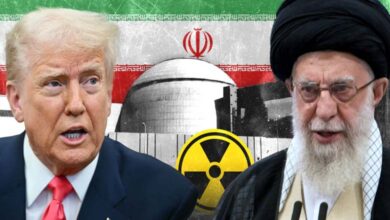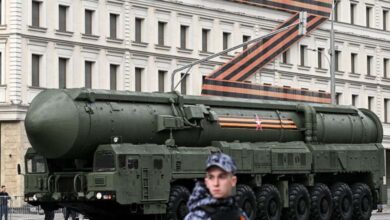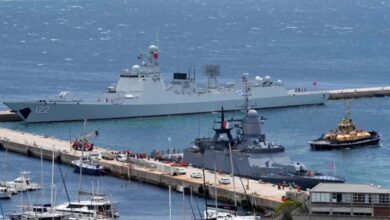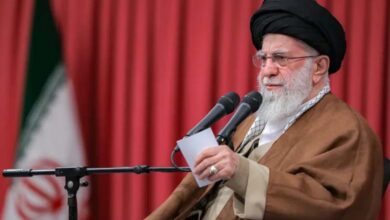Policy
By land, sea, and air: China unveils its latest weapons at military parade
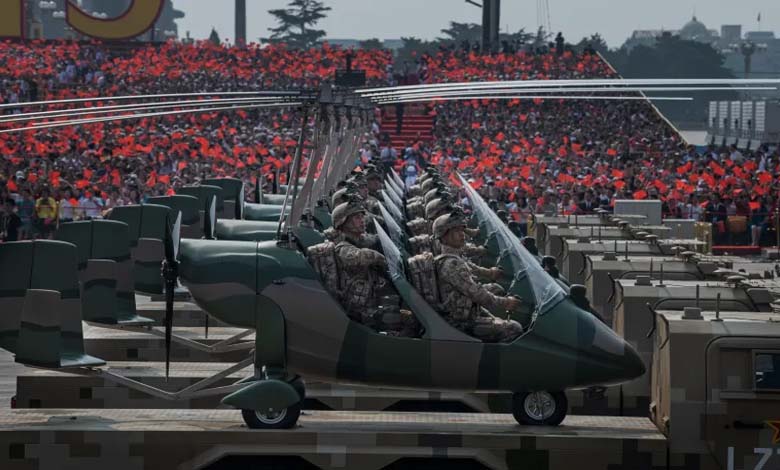
At an unprecedented military parade in Beijing, China showcased a wide range of its newest weapon systems, reaffirming its position as a military power reshaping the balance of global forces.
The parade, held to mark the 80th anniversary of the end of World War II, featured advanced strategic weapons in the fields of ballistic missiles, fighter jets, unmanned naval systems, laser air defense platforms, and more, highlighting the breadth of the Chinese military’s capabilities across land, sea, air, and cyberspace.
-
Strategic Bombers: A US-Russia-China race on the front line
-
Spectacular Progress: How Did China Build Its Air Power on Its Own?
- The DF-61 intercontinental ballistic missile
One of the main highlights was the debut of the DF-61, China’s newest intercontinental ballistic missile in years.
Transported on an eight-wheeled mobile launcher, its appearance surprised even seasoned military analysts.
- Range: believed to cover intercontinental distances, capable of striking U.S. territory.
- Classification: part of the “nuclear triad” (land, sea, air), unveiled alongside the JL-1 air-launched missile, the JL-3 sea-launched missile, and an upgraded DF-31.
- Strategic importance: described by the official Xinhua agency as a “trump card” to safeguard sovereignty and defend the “dignity of the nation.”
- Naming: the DF-61 designation was initially proposed in the 1970s for a liquid-fuel missile project canceled in 1978, making the current version a modern revival.
-
Submarines, Missiles, and Fighters: A Comparison of Strategic Weapons between China and the United States
-
Women, Gambling and Naivety: China Thwarts Three Espionage Plots
- Extra-large unmanned undersea vehicles – XLUUVs
For the first time, large unmanned submarines (XLUUVs) were displayed, underscoring China’s lead in this domain.
- Design:
- Model AJX002: 18–20 meters long, diameter of 1–1.5 meters.
- Second model: same length but significantly wider (2–3 meters), featuring two prominent masts.
- Possible missions: not officially disclosed, but assessments suggest they could be armed with torpedoes or naval mines, or deployed for deep reconnaissance.
- Significance: China currently operates the world’s largest unmanned submarine program, with at least five types in service or testing.
-
J-20s Now Guarding Beijing’s Skies: A Strategic Leap in China’s Air Force Capabilities
-
Facing China and U.S. Ambiguity.. Japan Rebuilds Its Military Power
- Hypersonic missiles – YJ-17
The new naval variant YJ-17, derived from the medium-range DF-17 missile equipped with a hypersonic glide vehicle, was presented.
- Features: high precision (hitting targets within a few meters in trials), extreme maneuverability to evade missile defense systems.
- Capabilities: believed to carry a conventional warhead, though potentially nuclear-capable.
- Deployment: unlike the land-based DF-17, the YJ-17 is thought to be launched vertically from destroyers and frigates.
- Strategic effect: together with other anti-ship missiles like the YJ-15, YJ-19, and YJ-20, it signals Beijing’s intent to challenge the security of U.S. aircraft carriers in the Pacific.
-
China bares its teeth… A major production leap for stealth fighters
-
China Changes the History of Warfare with a Non-Nuclear Warhead
- Air power – J-35 and nuclear H-6 bombers
Over 100 aircraft flew during the parade, including:
- The stealth fighter J-35: a fifth-generation twin-engine jet designed to rival U.S. models such as the F-35.
- The upgraded H-6 nuclear bombers: strategic aircraft capable of carrying long-range nuclear cruise missiles.
- Transport and airborne command aircraft: showcasing the PLA’s ability to conduct long-range joint operations.
- Aerial display: helicopters formed the number “80” in the sky for the anniversary, carrying banners such as “Peace will prevail” and “The people will triumph.”
-
The Buried Hell… What Is China Hiding Beneath Its Mountains?
-
A Nuclear-Proof Facility Ten Times Bigger Than the Pentagon… Discover China’s “Fortress”
- Laser weapons – directed-energy air defense
Two laser systems were also unveiled:
- Naval version: a high-powered laser mounted on warships.
- Land version: a laser fitted onto an eight-wheeled truck, enabling a massive power supply to overcome earlier technological limits.
- Operation: these weapons use electromagnetic energy to disable drones or missiles by generating heat or disrupting sensors.
- Advantage: each laser “shot” costs only a fraction of an interceptor missile, making them a more economical option for countering swarm drone attacks.
-
Decoding China’s Enigmatic Fighter Jet: A Triple-Power Revolution in the Sky
-
“The White Emperor”: Discover China’s Revolutionary Sixth-Generation Fighter




